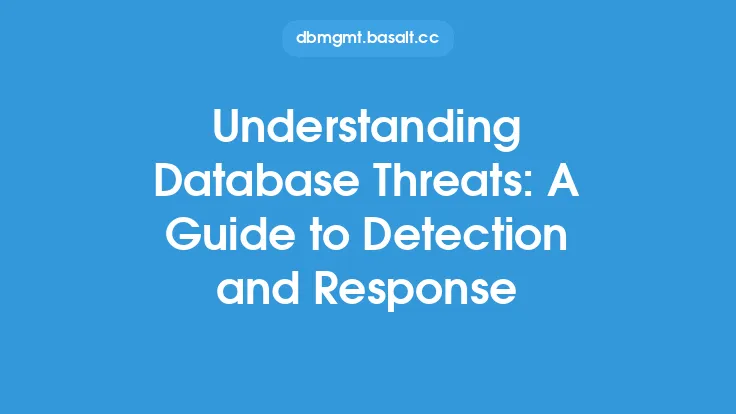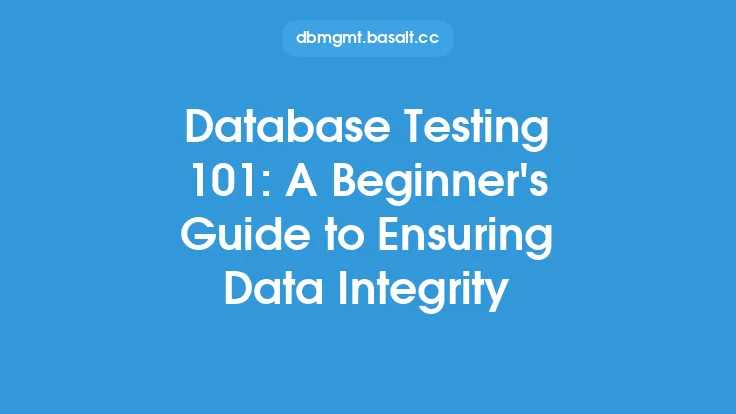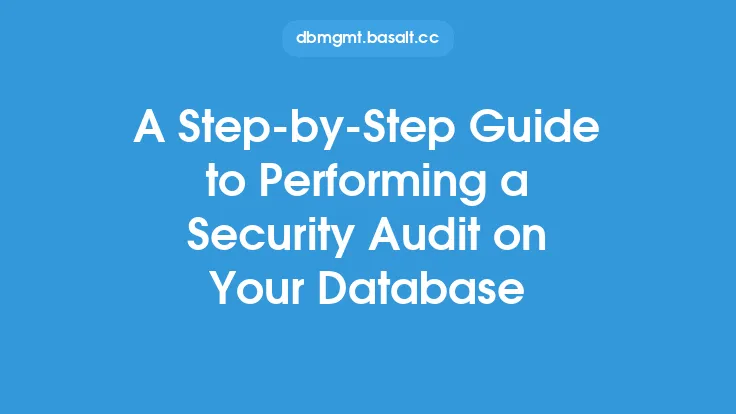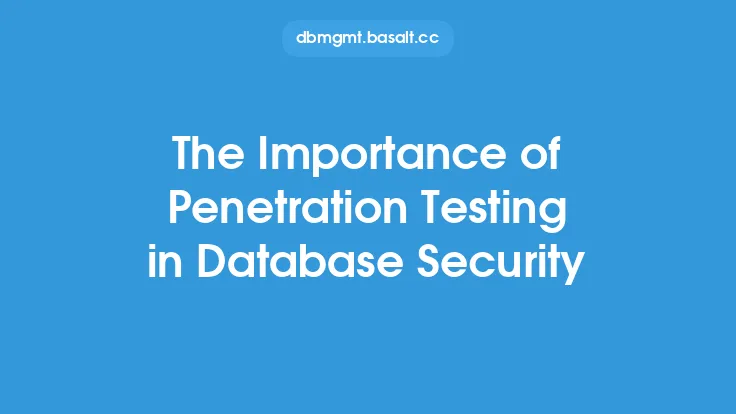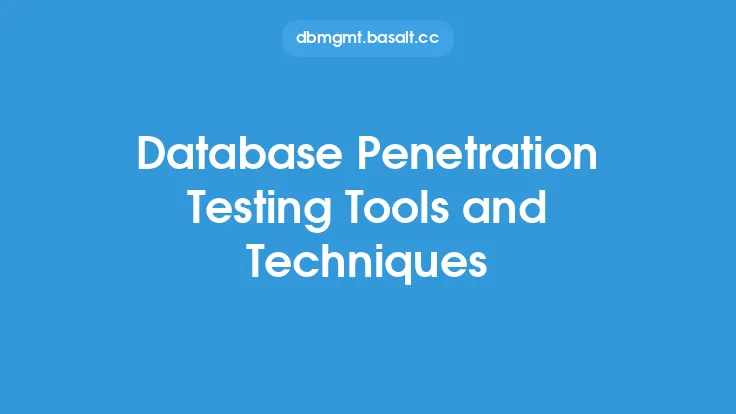Database penetration testing is a crucial aspect of database security that involves simulating attacks on a database to test its defenses and identify vulnerabilities. This type of testing is essential in ensuring the security and integrity of an organization's data, as it helps to detect and fix weaknesses before they can be exploited by malicious attackers. In this article, we will delve into the world of database penetration testing, exploring its concepts, benefits, and methodologies.
Introduction to Database Penetration Testing
Database penetration testing, also known as pen testing or ethical hacking, is a simulated cyber attack against a database to assess its security posture. The goal of pen testing is to attempt to breach the database's security controls, identify vulnerabilities, and exploit them to gain unauthorized access to sensitive data. This type of testing is typically performed by trained security professionals who use various tools and techniques to mimic real-world attacks. By conducting regular pen tests, organizations can proactively identify and address security weaknesses, reducing the risk of data breaches and cyber attacks.
Benefits of Database Penetration Testing
The benefits of database penetration testing are numerous and significant. Some of the most notable advantages include:
- Improved security posture: Pen testing helps to identify and fix vulnerabilities, reducing the risk of data breaches and cyber attacks.
- Compliance with regulations: Many regulatory bodies require organizations to conduct regular pen tests to ensure the security of sensitive data.
- Reduced risk of data breaches: By identifying and addressing vulnerabilities, organizations can reduce the risk of data breaches and the associated costs.
- Enhanced incident response: Pen testing helps organizations to develop and refine their incident response plans, ensuring they are better prepared to respond to security incidents.
- Increased confidence in security controls: Regular pen testing provides assurance that an organization's security controls are effective and functioning as intended.
Methodologies and Techniques
Database penetration testing involves a range of methodologies and techniques, including:
- Network scanning and reconnaissance: This involves using tools to scan the network and identify potential entry points and vulnerabilities.
- Vulnerability exploitation: This involves attempting to exploit identified vulnerabilities to gain unauthorized access to the database.
- Password cracking: This involves using tools to crack or guess passwords, allowing testers to gain access to the database.
- SQL injection: This involves injecting malicious SQL code into the database to extract or modify sensitive data.
- Social engineering: This involves attempting to trick database administrators or users into revealing sensitive information or providing access to the database.
Phases of Database Penetration Testing
The database penetration testing process typically involves several phases, including:
- Planning and reconnaissance: This phase involves planning the test, identifying the scope and objectives, and gathering information about the target database.
- Vulnerability scanning: This phase involves using tools to scan the database and identify potential vulnerabilities.
- Exploitation: This phase involves attempting to exploit identified vulnerabilities to gain unauthorized access to the database.
- Post-exploitation: This phase involves attempting to maintain access to the database, extract sensitive data, and cover tracks.
- Reporting and remediation: This phase involves documenting the findings, providing recommendations for remediation, and verifying that the vulnerabilities have been addressed.
Tools and Technologies
A range of tools and technologies are used in database penetration testing, including:
- Network scanning tools: Such as Nmap and Nessus.
- Vulnerability exploitation tools: Such as Metasploit and Burp Suite.
- Password cracking tools: Such as John the Ripper and Hydra.
- SQL injection tools: Such as SQLMap and Havij.
- Social engineering tools: Such as phishing kits and pretexting tools.
Challenges and Limitations
Database penetration testing is not without its challenges and limitations. Some of the most significant challenges include:
- Complexity of modern databases: Modern databases are often complex and distributed, making it difficult to identify and exploit vulnerabilities.
- Limited visibility: Testers may not have full visibility into the database's security controls, making it difficult to identify vulnerabilities.
- Risk of disruption: Pen testing can potentially disrupt database operations, causing downtime and data loss.
- Limited resources: Pen testing requires significant resources, including time, money, and expertise.
Best Practices
To get the most out of database penetration testing, organizations should follow best practices, including:
- Conducting regular tests: Regular pen testing helps to ensure that the database's security posture is maintained over time.
- Using a combination of automated and manual testing: Automated tools can help to identify vulnerabilities, while manual testing can help to exploit them.
- Involving multiple stakeholders: Pen testing should involve multiple stakeholders, including database administrators, security professionals, and management.
- Providing training and awareness: Organizations should provide training and awareness programs to help employees understand the importance of database security and the role of pen testing.
Conclusion
Database penetration testing is a critical aspect of database security that involves simulating attacks on a database to test its defenses and identify vulnerabilities. By conducting regular pen tests, organizations can proactively identify and address security weaknesses, reducing the risk of data breaches and cyber attacks. While there are challenges and limitations to pen testing, following best practices and using a range of tools and technologies can help to ensure the effectiveness of the testing process. As the threat landscape continues to evolve, database penetration testing will remain an essential component of any organization's security strategy.

